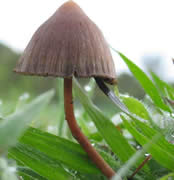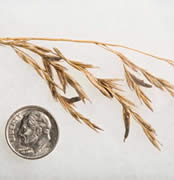The Mighty Fungi

The fungus kingdom is enormous in its diversity, with over 100,000 described species. It includes yeasts, molds, rusts, and the familiar mushrooms. Fungi are the primary decomposers and recyclers of the planet, breaking down organic matter and returning it back to the soil where they are absorbed by organisms in the ecosystem, through mutualistic partnerships.
Many animals and people consume edible fleshy fungi (morels, chanterelles, mushrooms, and puffballs). The fungi include the world’s most expensive food, the white truffles (a record $330,000 price was paid for a kilogram by a casino owner in 2010). Many fungi are poisonous or toxic, including the psychoactive fly agarics, psilocybes, and ergot fungi.
History
Early in our history, people discovered the psychoactive properties in the fungus kingdom. Fungi, most notably mushrooms, have been used and revered as sacramental tools to communicate with the spiritual world by many cultures for thousands of years.
The oldest known petroglyph depicting the use of psychoactive mushrooms comes from the rock shelters at Tassili n'Ajjer on the southern edge of the Sahara desert in Algeria dating back to the Neolithic period. It is postulated that the mushrooms depicted on the “mushroom shaman” are Psilocybe mushrooms.
There are many examples throughout the Old and New World where “sacred” mushrooms appear as a central component of religious ceremonies. India’s Sanskrit texts refer to the legendary food of the gods known as “Soma,” thought by many scholars to contain the hallucinogenic fly agaric mushroom (Amanita muscaria). The fly agaric mushroom is easily recognized by its distinctive white-flecked red cap.
The ancient Greeks who practiced the Eleusinian Mystery Rites drank a wheat-based beverage, likely infected with the ergot fungus (Claviceps purpurea) that contains LSD-like compounds.
 The Tassili n'Ajjer Mountains World Heritage Site is located in southeastern Algeria and is home to some of the world's earliest rock art (10,000 BC) including this mysterious mushroom-decorated shaman figure.
The Tassili n'Ajjer Mountains World Heritage Site is located in southeastern Algeria and is home to some of the world's earliest rock art (10,000 BC) including this mysterious mushroom-decorated shaman figure.
 Two-thousand year old mushroom headed figures found on a petroglyph along the Pegtymel River area of Siberia.
Two-thousand year old mushroom headed figures found on a petroglyph along the Pegtymel River area of Siberia.
 Psilocybe mexicana, Jalisco, Mexico. Photo by Cactu.
Psilocybe mexicana, Jalisco, Mexico. Photo by Cactu.
“There is a world beyond ours, a world that is far away, nearby, and invisible. And there is where God lives, where the dead live, the spirits and the saints a world where everything has already happened and everything is known. I report what it says. The sacred mushroom takes me by the hand and brings me to the world where everything is known. It is they, the sacred mushrooms that speak in a way I can understand. I ask them and they answer me. When I return from the trip that I have taken with them, I tell what they have told me and what they have shown me.”
~Maria Sabina, Mazatec shaman
 Initiation of Triptolemus into the Eleusinian Mysteries by Greek deities Demeter and Persephone. National Archeological Museum, Athens.
Initiation of Triptolemus into the Eleusinian Mysteries by Greek deities Demeter and Persephone. National Archeological Museum, Athens.



